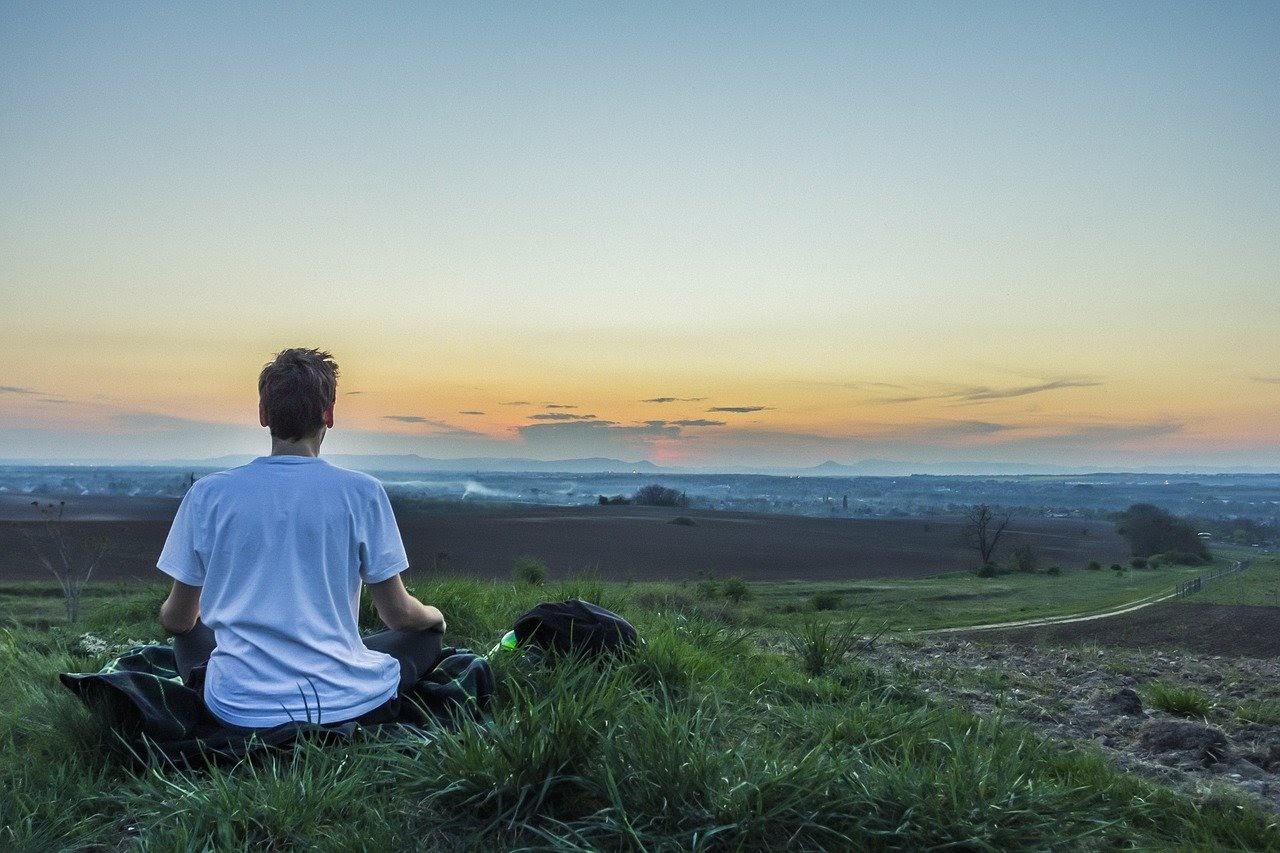
For many teachers, the summer of 2021 means reaching a finish line that seemed impossible a few months (or even a few weeks) ago. Some educators have taught remotely for the past year, while others have returned to modified in-person instruction or a hybrid model of the two.
While your students might be exhausted and ready for summer, it’s likely that you and your peers are experiencing high levels of burnout. At best, this means you need some time off during the summer. At worst, it means you are rethinking your profession.
Use the next few months to prepare for the year ahead. Learn more about your burnout symptoms and how to overcome them.
How the Pandemic Amplified Teacher Burnout
Even before the pandemic, teachers were known for working long hours and using their personal incomes to fund their classrooms. During the pandemic, the average educator’s work-life balance skewed even farther toward work with less time for life.
According to a survey by the Center for State and Local Government Excellence, the job satisfaction of K-12 employees fell from 69 percent in March 2020 to 44 percent in October 2020. A large percentage of these K-12 professionals are working extra hours: 41 percent of survey respondents said they were working more, either officially or unofficially, now than before the pandemic.
Most educators want what is best for their students and will do what it takes to create engaging lessons. However, this takes a severe toll on their mental and physical health.
“I’m trying to make sure I get enough rest, I’m trying to make sure I drink enough water, I’m trying to make sure I do all of those self-care things—but even doing those things, it’s still a lot,” says special education teacher Wade Buckman. “There’s this emotional fragility. The littlest thing can instantly bring me to tears, which would not be my normal.”
Even as remote learning stabilized after the first few months of the pandemic, most teachers still found themselves overwhelmed and overworked.
“Although the initial scramble to provide remote instruction amid the outbreak of the pandemic has faded somewhat, teachers’ workloads still seemed to be higher in fall 2020 than they were before the pandemic began,” explain Julia Kaufman and Melissa Diliberti at the Center on Reinventing Public Education. Their research found teachers work an average of six more hours per week now than before the pandemic, with 24 percent of teachers working more than 56 hours per week on average.
Teachers aren’t just overworked. They are emotionally drained as well, which is leading to higher levels of burnout.

Teachers Are Currently Suffering from Compassion Fatigue
Many people from all walks of life will experience some sort of trauma from the pandemic. This ranges from the loss of loved ones to the emotional stress of missing out on life events such as graduations and weddings. Psychologists have recently noticed that educators have taken on the trauma of their students, which causes them to experience their emotional distress as well.
“Secondary traumatic stress (STS) is the term most commonly found in the literature to describe the phenomenon brought on by helping someone exposed to trauma,” write Sarah Erdman, Laura J. Colker, and Elizabeth C. Winter, authors of “Trauma and Young Children: Teaching Strategies to Support and Empower Children.” “A more recent term is compassion fatigue, often perceived as a kinder, less stigmatizing way to describe this phenomenon.”
The authors explain that teachers going through their own pandemic-related traumas are affected by the traumas of their students. Additionally, educators might have their own childhood traumas that resurface as a result of the pandemic or what their students are going through.
“Whether you’re a teacher, paraprofessional, counselor, or school resource officer, every staff member cares deeply about students,” says Tim Walker, senior editor at the National Education Association. “And that means being exposed to the traumas students bring into school every day, including poverty, grief, family problems, racism, drug abuse… Even if they have not endured trauma themselves, educators can begin exhibiting symptoms similar to those of their students – withdrawal, anxiety, depression, and chronic fatigue.”
Teachers of younger students felt the fear and confusion of a class of 30 children trying to understand why they couldn’t see their friends. Instructors of older students might encounter 100 or more teens a day experiencing the anxiety of an uncertain future. This is exhausting.
“People experiencing either compassion fatigue or burnout should not be stigmatized,” says Astrid Kendrick, adjunct assistant professor at the University of Calgary. “Instead, they should be encouraged to access professional support, such as seeing a doctor, therapist or psychiatrist, who are best trained to guide their recovery.”

How You Can Overcome Teacher Burnout Ahead of the New School Year
Chronic teacher burnout won’t be solved with doughnuts in the breakroom or a long weekend. Educators who want to stay in the teaching field need to take active steps to refresh themselves over the summer and plan for the year ahead.
Find Time for Yourself Daily
One of the hardest parts of the pandemic was not getting time to yourself, when staying home with your spouse and kids — something that is essential to your mental health. Leah Juelke, the 2018 North Dakota Teacher of the Year, told NPR how much she missed having some personal time each day — even if it only lasted a few minutes during her commute or in the early-morning prep time before class. That time provided a small, but real opportunity for her to prepare for the day or recover from it.
Moving forward from the pandemic, remember to schedule time for yourself. This could mean using a five-minute guided meditation app in your classroom before students arrive or taking a peaceful walk around the building during lunch. These moments are yours and can help you reset.
Establish Your Own Work-Life Balance
Susan Craig, the author of Reaching and Teaching Children Who Hurt, recommends expanding the work-home boundary. This isn’t easy when you teach and live in the same space. However, creating a small “cleansing ritual” each day can help you transition from work mode to personal mode.
This ritual could be a 10-minute walk, a series of stretches, an afternoon snack break, or any brief activity that tells your brain that work is over. The challenge is to limit work emails, calls, and texts after you have made this mental transition.
As you return to school in the fall, you can keep up with this cleansing activity to destress after a long day.
Keep Up With Your Social Circle
When you are tired or burned out, you may be tempted to cancel social outings and spend more time at home alone. However, these social get-togethers can help you recharge and reconnect with those you love.
“Don’t forget to plan for social events with your friends and family,” the team at Kids Academy explains. “No matter what it is, be sure that you make time for communicating with the people who make you the happiest.”
Make Time to Laugh
“Learning is supposed to be fun, so laugh and incorporate humour with a purpose,” the team at Wabisabi Learning writes. “Even if you’re not the comedian type, doing something out of the ordinary could indelibly etch any lesson into your students’ brains.”
Your students could probably use a much-needed laugh as well, which means you are lowering their burnout risks along with yours.
Identify How Burnout Affects You
Even before you realize you are experiencing burnout, you may notice symptoms and uncharacteristic changes in your behavior.
“When we’re exhausted it’s very hard to maintain our composure when we teach,” says Patricia Jennings, professor of education at the University of Virginia and author of “Teacher Burnout Turnaround.” “We may become overly reactive. We might imagine that a student’s behavior is intentional and take it personally. We might feel like we’re running out of time, so we start getting anxious.”
It helps to know when an outburst is a sign of a larger problem or your body telling you that your emotional state is weaker than you might have thought.
Check in With Mental Health Providers
In the weeks leading up to the new school year, schedule time with a mental health professional to work through any concerns you have about the new year. This person can also guide you through the coming months.
You may find those professionals in your school. For example, Kathleen Remington, the Jeffco Public Schools’ Employee Assistance Program manager and counselor, provides free counseling services. This school district in Colorado has an internal health service instead of a contracted partner, which makes it easier for educators to access mental health care.
“This year, our top issue has been anxiety,” she says. “We’ve seen an increase in family issues, depression and a lot of transition and change [issues]. This is probably the hardest teaching year I’ve ever seen in my 11 years of being at Jeffco.”
Create a Plan for Fall 2021
Even though more places are opening up and returning to pre-pandemic ways, there will likely still be challenges and hurdles in the coming year. If you can mentally prepare for these now, you can help yourself in the fall.
“We all know that the 2021-2022 school year is going to have a lot of unique challenges on top of the usual stresses of teaching,” says teacher and podcaster Angela Watson. “Hoping that things will be better isn’t nearly as effective as creating an actionable plan to make teaching work for your life.”
Watson encourages educators to spend time over the summer creating a sustainable plan and vision for the upcoming year. They can learn where they get overwhelmed or burned out and take steps to prevent that from happening in the fall.

Schools and Administrators Need to Drive Future Change
While the onus often falls on teachers to protect their mental health and avoid burnout, school leaders and administrators can take steps to help their employees.
“If the well-being of teachers is compromised by issues inherent to the school system, then dispensing vague or impractical guidance that places the onus to fix it on teachers is unfair, and won’t work,” writes Edutopia’s Sarah Gonser. “Schools need to acknowledge their role in the problem and put in place the structures, practices, and time for self-care, reflection, and general well-being among educators, school staff, and the leaders themselves.”
While some aspects of learning (like class sizes) fall outside of the scope of school systems, Gonser says there are things in the control of administrators to improve teacher mental health.
“If you want your teachers to stay positive, or in some cases simply stay, you must create an environment where everyone is working together to realize the vision they have for the school,” says high school principal Dr. Rebecca Nicolas. Teachers can do everything in their power to avoid burnout, but sometimes simply aren’t in a situation to be successful.
Educators across the country earned a much-needed break this summer. Even if you are teaching summer school or taking on a temporary job to earn extra money, set aside some time over the next few months to recharge and prepare yourself mentally for the year ahead.
Images by: fizkes/©123RF.com, fizkes/©123RF.com, nastya_gepp, brenkee

